Towing and tie-down hooks
The towing hooks should be used only in an emergency (e.g., to free a stuck vehicle from mud, sand or snow).

- Use only the specified towing hook and tie-down hook. Never use suspension parts or other parts of the body for towing or tie-down purposes.
- To prevent deformation to the front bumper and the towing hook, do not apply excessive lateral load to the towing hook.
Front towing hook:
1. Take the towing hook out of the tool bucket and take the screwdriver out of the tool bag. Take the wheel nut wrench out of the cargo area.
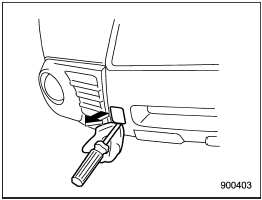
2. Pry off the cover on the front bumper using a screwdriver, and you will find a threaded hole for attaching the towing hook.
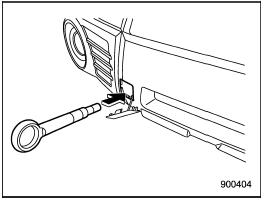
3. Screw the towing hook into the thread hole until its thread can no longer be seen.
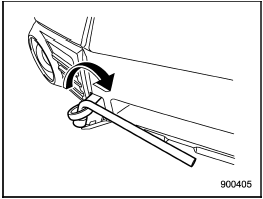
4. Tighten the towing hook securely using a wheel nut wrench.
After towing, remove the towing hook from the vehicle and stow it in the tool bucket.
Fit the towing hook cover on the bumper.

- Do not use the towing hook except when towing your vehicle.
- Be sure to remove the towing hook after towing. Leaving the towing hook mounted on the vehicle could interfere with proper operation of the SRS airbag system in a frontal collision.
Rear towing hook:

If a trailer hitch is installed, it is not possible to install the rear towing hook.
To install the rear towing hook, the standard bumper beam must be installed on the vehicle at a SUBARU dealer. Consult a SUBARU dealer for details.
Use a hitch ball and follow the instructions below when towing.
- The weight of the object being towed must be less than the weight of the vehicle.
- Drive the vehicle 20 mph (32 km/h) or less speed.
- Do not drive more than 31 miles (50 km).
1. Take the towing hook out of the tool bucket and take the screwdriver out of the tool bag. Take the wheel nut wrench out of the cargo area.
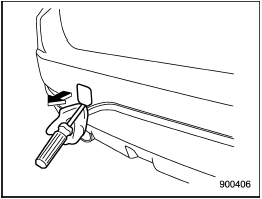
2. Pry off the cover on the rear bumper using a screwdriver, and you will find a threaded hole for attaching the towing hook.
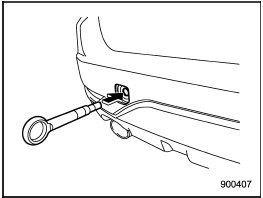
3. Screw the towing hook into the thread hole until its thread can no longer be seen.
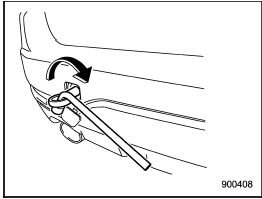
4. Tighten the towing hook securely using a wheel nut wrench.
After towing, remove the towing hook from the vehicle and stow it in the tool bucket.
Fit the towing hook cover on the bumper.

Do not use the towing hook except when towing your vehicle.
Front tie-down hooks:
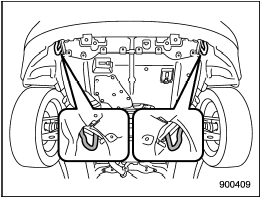
The front tie-down hooks are located between each of the front tires and the front bumper.
Rear tie-down hooks:
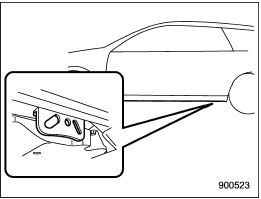
The rear tie-down hooks are located near each of the jack-up reinforcements.

Use the rear tie-down hooks only for downward anchoring. If they are used to anchor the vehicle in any other direction, cables may slip off the hooks, possibly causing a dangerous situation.
See also:
Catalytic converter
Turbo models
Non-turbo models
The catalytic converter is installed in the
exhaust system. It serves as a catalyst to
reduce HC, CO and NOx in exhaust
gases, thus providing cleaner exha ...
Synthetic oil
You should use synthetic engine oil that meets the same requirements given for conventional engine oil. When using synthetic oil, you must use oil of the same classification, viscosity and grade shown ...
Tire pressure monitoring system (TPMS) (if equipped)
The tire pressure monitoring system provides the driver with a warning message by sending a signal from a sensor that is installed in each wheel when tire pressure is severely low. The tire pressure m ...


